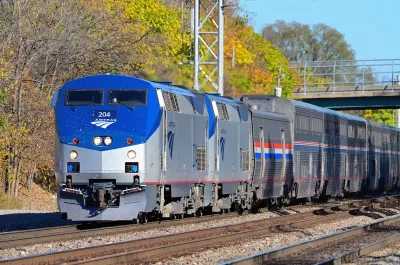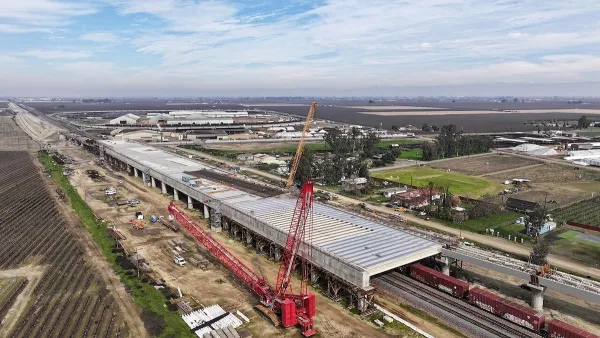The agency plans to cut 10 percent of its workforce and has confirmed it will not fund new high-speed rail projects.

Amtrak has started to cut costs in response to pressure from the Trump administration to align with its priorities.
According to an article by Dan Zukowski in Smart Cities Dive, the agency carried 15 percent more customers last year than in 2023, and its new St. Paul-to-Chicago line exceeded ridership projections. Now, Amtrak is reorganizing its priorities; its CEO resigned in March, and Amtrak announced it will cut roughly 10 percent of jobs.
In April, USDOT rescinded federal support for the Texas Central high-speed rail project, and “An Amtrak spokesperson confirmed to Smart Cities Dive that the railroad is no longer pursuing new high-speed rail projects.”
Sean Jeans-Gail, vice president of policy and government affairs for Rail Passengers Association, said the flat funding, which is now directed to the national network rather than focused on the Northeast Corridor, is a pleasant surprise in light of feared deeper cuts. “Jeans-Gail said there is a consensus forming around some new policy ideas, such as a national equipment pool that would purchase and lease rail cars, train sets and locomotives to Amtrak, states and other passenger railroads, a practice that is commonplace in commercial aviation.”
FULL STORY: How will Amtrak change under the second Trump administration?

Planetizen Federal Action Tracker
A weekly monitor of how Trump’s orders and actions are impacting planners and planning in America.

Amtrak Cutting Jobs, Funding to High-Speed Rail
The agency plans to cut 10 percent of its workforce and has confirmed it will not fund new high-speed rail projects.

Chicago’s Ghost Rails
Just beneath the surface of the modern city lie the remnants of its expansive early 20th-century streetcar system.

DOT Officially Cancels California High-Speed Rail Funding
The Trump administration has repeatedly taken aim at the LA-to-Bay Area rail project, blaming Democratic leaders for cost overruns and delays.

Legislators Push Back Against ‘Rent-Setting’ Software
In the last six months, lawmakers in more than two dozen cities and states have made strides to stop landlords from using anti-competitive rental software to determine how much to charge for rent. Shelterforce looks at the wins and losses so far.

DOT Awards 77% of BUILD Grants to Road Projects
Trump’s DOT is directing 87 percent of total grant dollars to states that backed the President in the last election.
Urban Design for Planners 1: Software Tools
This six-course series explores essential urban design concepts using open source software and equips planners with the tools they need to participate fully in the urban design process.
Planning for Universal Design
Learn the tools for implementing Universal Design in planning regulations.
Caltrans
City of Fort Worth
Mpact (founded as Rail~Volution)
City of Camden Redevelopment Agency
City of Astoria
City of Portland
City of Laramie





























